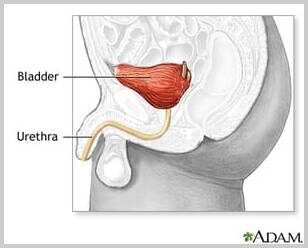
Urethral Stricture
A urethral stricture is a narrowing, usually from scarring, of the urethra (the tube that drains urine). It can have many different causes, but it is generally due to trauma, infection or inflammation. The narrowing of the urethra can severely restrict the flow of urine from the bladder, causing decreased stream, increase in infections or blocking it completely in some cases. Urethral stricture occurs more commonly in men, as they have a longer urethra than seen in women.
Causes of Urethral Stricture
While not all causes for urethral stricture can be identified, it may be caused by a variety of factors, including:
● Recurrent urinary tract infections
● Catheter trauma
● Sexually transmitted diseases
● Urethral or prostate cancers
● Prostate removal surgery (Prostatectomy)
● Pelvic fracture
● Extended use of catheters
Symptoms of Urethral Stricture
Symptoms of urethral stricture may include a sudden slowing of the urine stream. Other symptoms may include:
● Decreased amounts of urine expelled during urination
● Narrow urine stream
● Swollen penis
● Pelvic pain
● Pain with urination
● Urine leakage after urination
● Blood in the urine
● Urinary tract infections
● Unable to urinate at all
● Unable to insert catheter
Diagnosis of Urethral Stricture
A urethral stricture is diagnosed through collecting a medical history and a physical examination. Additional tests may be performed, and may include:
● Pelvic ultrasound
● CT abdomen and pelvis
● Cystoscopy
● Catheter insertion
● Uroflowmetry
● Urine and blood tests
Treatment of Urethral Stricture
Urethral stricture requires treatment if symptoms are noticeable or impacting the patient. Immediate treatment is necessary for urethral strictures causing pain or blocking the urine flow. If a patient cannot urinate, they will need to see immediate care. For mild cases or urethral stricture, a catheter may be used to open the urethra and correct the stricture. Severe cases may require a surgical dilation, or cutting through the stricture or, if recurrent, a reconstruction of the urethra. It is important to follow up regularly when strictures are identified to ensure there is no recurrence. Follow up may include cystoscopy to look inside the urethra to evaluate for recurrence.
